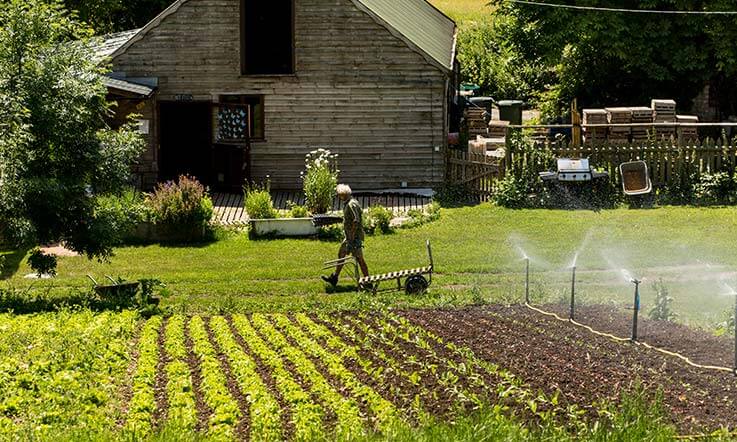Organic farming gets support as it is a sustainable land-use system. Although the social and environmental benefits of organic farming are widely recognised, the potential of organic farming to solve the environmental and resource challenges of our time are still assessed differently. In order to get a well-founded overview of the current state of knowledge and to evaluate the public goods provided by organic farming, the Thünen Institute in Germany jointly with other research partners and funded by the Federal Ministry of Food and Agriculture (BMEL), evaluated the scientific literature on the topic. Particular attention was paid to the areas of water conservation, soil fertility, biodiversity, climate change mitigation and adaptation, resource efficiency and animal welfare. The scientists presented the results on January 21, 2019 at a specialist event during the International Green Week in Berlin.
The study evaluated 528 publications and considered 33 parameters comparing organic and conventional farms. This resulted in more than 2,800 individual comparisons. Based on this the study concluded that organic farming can make a relevant contribution to solving the contemporary environmental and resource challenges and is rightly considered a key technology for sustainable land use.
The results make it clear that organic farming has a high potential for the protection of groundwater and surface water. For this, absence of synthetic pesticides is important. Organic farming was also found to reduce nitrogen emissions by an average of 28%. Organic farming is also expected to lower the burden of veterinary medicinal products and phosphorus inputs into water bodies, but not enough suitable studies were available to prove this point.
Organic farming clearly benefits soil fertility. The abundance and biomass of earthworm populations were on average 78 and 94% higher, respectively. In 62% of the comparative pairs, organic farming was associated with less acidification in the topsoil, but there was no clear tendency regarding differences in content of plant-available phosphorus in the topsoil.
The study results also emphasise that organic farming can contribute to erosion prevention and flood protection. The content of organic carbon in the soil – in simple terms, the humus content – and the aggregate stability in organic farming were on average 26% and 15% higher, respectively; infiltration showed a difference of 137%. This reduces surface runoff and soil erosion.
The fact that organic farming has a positive effect on biodiversity is clearly evident for the species groups studied. On average (median), the average species numbers on arable land were 95% higher under organic management, field margin vegetation was 21% higher and the number of field birds species were 35% higher. Values were also higher for flower‐visiting insects. Overall 86% of the comparative pairs showed distinct advantages for flora and 49% for the fauna. Only two out of 75 studies considered found negative effects from organic management. It should be borne in mind that the landscape structure has a significant impact on biodiversity – especially in the case of fauna – and that these can greatly overlap the effects of land use.
The contribution organic farming makes to climate protection is less clear. As a result of the higher carbon storage rate and reduced nitrous oxide emissions, organic farms emit an average of 1,082 kg less CO2 equivalents per hectare per year than conventional. However, due to the lower yield levels in organic farming, yield-related climate benefits are likely to be comparable to conventional agriculture.
The sparing use of resources in organic farming is reflected, among other things, in nitrogen and energy efficiency. In both areas, organic farming proved to be more advantageous. In crop production, nitrogen efficiency was on average 12% and energy efficiency 19% higher than in conventional farming.
In 46% of the study pairs, no clear differences were found between organic and conventional livestock farming. The organic farms showed advantages in 35% of the pairs, the conventional ones in 19%. The existing studies indicate animal behaviour and well-being benefits of organic livestock husbandry, e.g., due to greater space or access to pasture. There were, however, no fundamental differences in animal health, where, despite the reduced used of veterinary inputs, differences in farm management appear to be more crucial than the production methods. It is suggested that organic standards should consider implementing more outcome‐based assessments to safeguard the health‐related aspects in particular.
